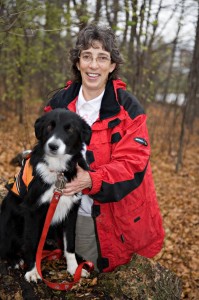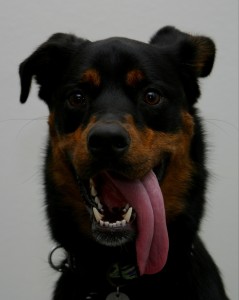 Today we want to talk about a fun subject: geocaching with dogs. Many geocachers love to take their canine friends along on the hunt. In some ways it’s no different than taking your dog to the park or on a walk. However, if geocaching will take you on a longer hike than you or your dog are used to, then here are some things to keep in mind.
Today we want to talk about a fun subject: geocaching with dogs. Many geocachers love to take their canine friends along on the hunt. In some ways it’s no different than taking your dog to the park or on a walk. However, if geocaching will take you on a longer hike than you or your dog are used to, then here are some things to keep in mind.
Do your research:
- Make sure the geocaches you plan to find have the “dogs allowed” attribute (attributes are the little black and white icons on the right side of a cache description page underneath the map)
- Find out the leash laws of the location where you will be geocaching
- Think about the length of the hike and the terrain - and how YOUR dog will do in that setting
- Plan for any special gear that your dog may need
Take the basics:
- Doggie bags (to pick up dog poo) - check out Dicky Bags
- A leash
- Water (with a collapsible bowl) and dog treats
Get your dog involved:
- Teach him to sniff out Tupperware or ammo cans
- Make sure to always praise him when he finds a cache
- Remember your dog can be a great muggle decoy
- You can even create an account at Geocaching.com to log their finds
Keep them safe:
- Watch for venomous snakes! Curiosity will get the best of the dog and so will a snake!
- Carry rattlesnake vaccine
- Spray them for ticks and mosquitos and carefully check for ticks at the end of your outing
- Avoid other animals that have young
- Remember that the limits of your dog may be less than yours.
- Know YOUR dog and your dog’s limits. Not all dogs make good Geodogs.
Consider special gear:
- Pooch booties for those icy treks, or wax the feet with vaseline to avoid frostbite, or try musher's secret paw wax
- Doggie backpacks (RuffWear)
- Pet tag silencer (see below)
- Lighted collar for geocaching at night (suggestions below)
Here are some ideas and suggestions for doggie gear:
A collar made of a material called Day-Glo - a super tough synthetic material that can be wiped clean just in case your dog rolls in something gross. These collars are also very strong and won't break if you have a dog that yanks on his or her collar. The material comes in a wide range of colors. Many hunting dog suppliers sell the collars inexpensively and often include a stamped name plate riveted to the collar. There is even a version with a lengthwise reflective stripe. Another great collar idea is the nylon collar with name and phone number embroidered right on.
Every dog should have identification. Even if your dog has a microchip (another great idea), your chances of reuniting with a lost pal are better with an ID tag. The numbers can wear off, so check it regularly and replace if needed. You can get tags engraved on both sides, high tech tags with QR codes or scruff tags that slide onto the collar and sit on top of the dog's neck (the scruff).
If your dogs have a lot of dangly tags around their neck (ID tag, rabies tag, dog license, trackable tag), how about a pet tag silencer? It's a little pouch that holds all the tags and keeps them from clanking together and helps prevent engraving from rubbing off. Another option is to get a stretchy rubber tag silencer that goes around the outside of each tag to prevent clanking. Just a note, depending on the weather in your area, the rubber part may become brittle over time.
For geocaching at night, you may want to try a lighted collar.
There are some good ones at glowdoggie.com. They are very bright, have no on-off switch to fumble with (you hang them with the battery pack up and they turn off), and are supposed to be completely immersible if your dog likes to swim! Another one to look at is the night-ize collar. It works well, but the switch can be hard to operate with cold mittened hands.
 A good leash is important. Day-glo leashes hold up well to abuse if your dog likes to grab, yank, and chew leashes. Leashes that fail almost always break at the swivel snap - the swiveling wears down the metal, and one day a good yank breaks the snap. So be sure to inspect the snap and replace the leash when it's worn.
A good leash is important. Day-glo leashes hold up well to abuse if your dog likes to grab, yank, and chew leashes. Leashes that fail almost always break at the swivel snap - the swiveling wears down the metal, and one day a good yank breaks the snap. So be sure to inspect the snap and replace the leash when it's worn.
If your dog is a wanderer, you may want to look into a Tagg collar. It's a gps that can text or email you if your dog is out wandering and can send you the location so you can find him. More info at pettracker.com.
Get some good combs, brushes, and sprays for getting burrs and stuff out of your dog's fur after the geocaching adventure (suggestions: mane 'n tail or laser sheen).
Thanks to efb01 who sent MANY of these great tips. Be sure to listen to SHOW 407 for a more detailed discussion about Geocaching With Dogs.
Disclosure: The Amazon links on this page are Affiliate links.


No comments yet.